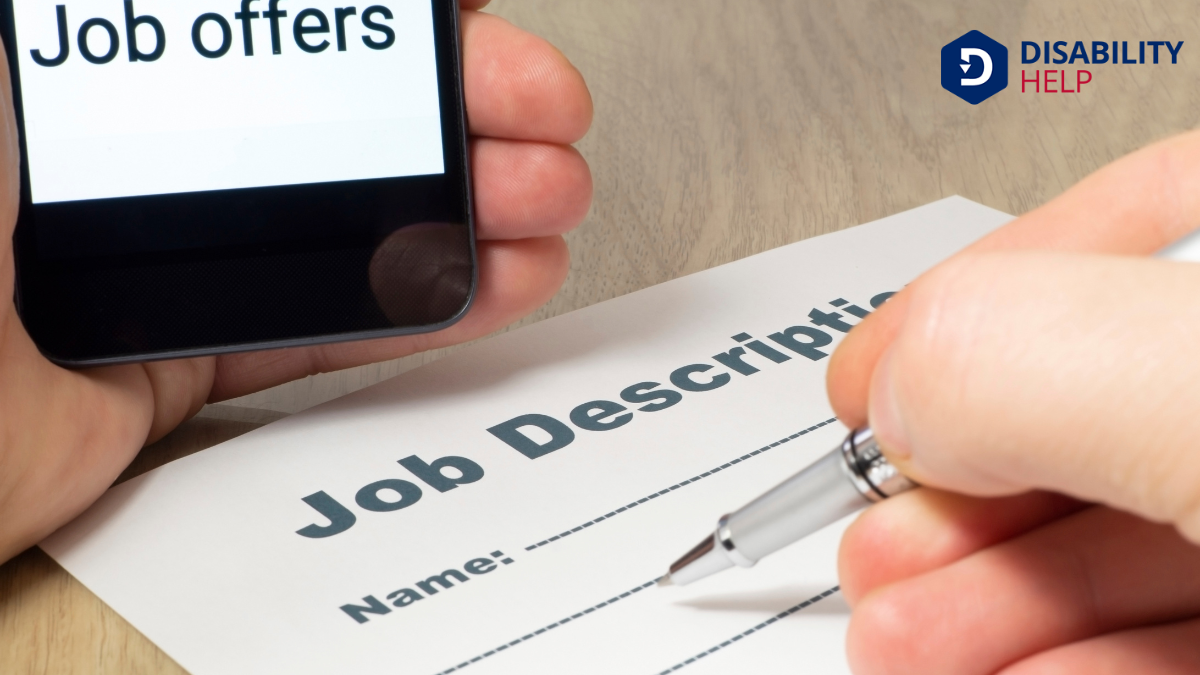Disability bias in hiring is something we need to address because it often goes unnoticed. It’s the preconceived notions we might hold about the capabilities of individuals with disabilities that influence our decisions. This bias can creep into our hiring processes in subtle ways, like assuming someone isn't fit for a role without basis or having inaccessible interview setups. Let's explore how these biases form and the impact they have on creating an inclusive workplace.
Key Takeaways
- Disability bias involves misconceptions about individuals' capabilities based on their disabilities.
- It manifests as premature disqualification due to assumptions about a candidate's ability.
- Inaccessible interview processes prevent candidates from demonstrating their true potential.
- Unconscious preferences for traditional employee images exclude those with disabilities.
- Fair assessments and inclusive environments are essential for combating hiring bias.
Understanding Disability Bias in the Workplace
Although many of us endeavor for inclusivity, understanding disability bias in the workplace is vital for meaningful change.
We need to recognize that bias often stems from misconceptions about the capabilities of individuals with disabilities. Such biases can manifest subtly, affecting decisions and interactions in ways we mightn't immediately perceive.
It's essential to educate ourselves on how these biases form and linger, often rooted in stereotypes and a lack of awareness.
Common Forms of Disability Bias in Hiring

Recognizing the misconceptions about disabilities is just one part of the challenge; we must also identify how these biases appear during the hiring process.
We often encounter biases when assumptions are made about a candidate's capability based solely on their disability. This can lead to dismissing their qualifications prematurely.
Another common form is the lack of accessible interview processes. If interviews aren't accommodating, candidates mightn't be able to fully showcase their potential.
Additionally, there's often an unconscious preference for candidates who fit a "traditional" image of an employee, excluding those with disabilities.
It's essential that we address these forms of bias by ensuring fair assessments and creating inclusive environments that allow every candidate to demonstrate their true abilities.
The Impact of Disability Bias on Job Seekers
When we consider the impact of disability bias on job seekers, it’s crucial to acknowledge how profoundly it affects their confidence and career prospects. This bias often leads to feelings of inadequacy and discouragement, as individuals encounter barriers that seem insurmountable.
We can all imagine how exhausting it must be to constantly prove one's worth beyond a visible or invisible disabilityA disability that is not immediately apparent, such as a mental health condition or chronic illness.....
Moreover, disability bias can limit access to opportunities that are imperative for professional growth. It affects not only job seekers' current job search but also their long-term career trajectory.
When opportunities are unfairly withheld, it stifles potential and innovation. We must recognize that creating an inclusive environment benefits everyone, enriching workplaces with diverse perspectives and talents, ultimately enhancing productivity and morale.
Identifying Barriers in the Hiring Process
To truly address disability bias in hiring, we must first identify the barriers that persist in the process. These barriers often begin with inaccessible application systems, which can deter qualified candidates with disabilities. Online platforms might lack features like screen readerSoftware that reads aloud the text on a computer screen, used by individuals who are blind or visual... compatibility, leaving some applicants unable to complete their submissions.
Additionally, interview practices can be exclusionary if they don't accommodate various needs, such as sign language interpretation or extended time for assessments. Biases can also arise from misconceptions about a candidate's ability to perform job duties. This may lead to unfair assumptions during the interview stage.
Moreover, workplace cultures that aren’t inclusive may inadvertently signal to candidates that they won't be supported. Recognizing these challenges is the first step in creating a more equitable hiring environment.
Strategies for Creating Inclusive Job Descriptions

Addressing barriers in the hiring process paves the way for more inclusive practices, starting with job descriptions.
We should aim to craft descriptions that welcome diverse candidates, particularly those with disabilities. First, let's guarantee that the language we use is clear and free from jargon. This makes it easier for everyone to understand the role.
We can also focus on essential skills and tasks, rather than unnecessary qualifications that might exclude capable individuals. Additionally, it's helpful to highlight our commitment to diversityThe inclusion of individuals from a wide range of backgrounds, including people with disabilities. and inclusionThe practice of creating environments in which any individual or group can be and feel welcomed, res... right in the job posting.
Indicating that we provide accommodationsModifications or adjustments in healthcare settings to support patients with disabilities. encourages applicants to feel supported. By being thoughtful and intentional, we create job descriptions that open doors for all candidates, fostering a more inclusive workplace.
Implementing Accessible Interview Practices
As we work towards more equitable hiring processes, let's focus on making our interviews accessible to everyone.
We can start by adopting inclusive interview formats and integrating assistive technologies that cater to diverse needs.
Additionally, offering flexible scheduling options guarantees candidates can participate fully and comfortably.
Inclusive Interview Formats
While many organizations endeavor to foster diversity, it's essential we implement accessible interview practices to truly support inclusive hiring. One effective approach is to offer various interview formats. By providing options like virtual interviews, written responses, or even in-person meetings with necessary accommodations, we allow candidates to choose the format that best suits their needs.
This flexibility demonstrates our commitment to inclusivity, ensuring everyone can showcase their skills and potential without unnecessary barriers.
We should also prepare interviewers to be adaptive and understanding. Training on recognizing and eliminating biases can greatly enhance the quality of our interactions.
Let's make interviews a platform where every candidate feels valued and heard. By prioritizing inclusive formats, we contribute to a more equitable recruitment process.
Assistive Technology Integration
Integrating assistive technology into our hiring process is a crucial step in making interviews more accessible. We can create an inclusive environment by guaranteeing candidates with disabilities have the tools they need to showcase their skills effectively.
Screen readers, speech-to-text software, and video call platforms with captioning are just a few examples of technology that can make a significant difference.
When we proactively offer these options, we demonstrate our commitment to diversity and inclusion. It’s important to communicate openly with candidates about their specific needs and provide the necessary accommodations.
Flexible Scheduling Options
Providing flexible scheduling options is an essential part of implementing accessible interview practices. When we prioritize flexibility, we show candidates that we value their unique needs and commitments. Not everyone can attend interviews during standard business hours due to medical appointments or other obligations related to their disability.
By offering varied time slots or virtual meeting options, we can accommodate everyone's schedule, making the process more inclusive. It's about recognizing that each person navigates their day differently.
Flexibility can reduce stress and anxiety for candidates, allowing them to present their best selves. When we adjust our approach, we're not only fostering inclusivity but also ensuring we're tapping into a diverse pool of talent.
Let's work together to create a more welcoming and equitable hiring process.
Frequently Asked Questions
How Can Companies Measure the Success of Their Disability Inclusion Efforts?
We can measure our disability inclusionThe practice of ensuring that individuals with disabilities have equal access to employment opportun... success by tracking hiring rates, retention, and employee satisfaction. Let’s also gather feedback from employees with disabilities and assess workplace accommodations to guarantee we’re creating an inclusive and supportive environment for everyone.
What Are Some Common Misconceptions About Workers With Disabilities?
We often think workers with disabilities require excessive accommodations or can't perform as well, but that's not true. They're just as capable and bring unique perspectives. Let's challenge these misconceptions and embrace a more inclusive workplace.
How Does Disability Bias Intersect With Other Forms of Discrimination?
When we consider how disability bias intersects with other forms of discrimination, we see a complex web. It's essential that we recognize overlapping biases, like race and gender, to address these intertwined injustices and foster a truly inclusive environment.
What Role Do Disability Advocacy Organizations Play in Reducing Hiring Bias?
We rely on disability advocacyEfforts and services aimed at protecting and promoting the rights and interests of individuals with ... organizations to educate, raise awareness, and drive policy changes. They empower us to challenge biases, promote inclusive hiring practices, and guarantee equal opportunities for everyone, fostering a more diverse workplace.
How Can Technology Assist in Reducing Disability Bias in Recruitment?
We can leverage technology to reduce bias by using AI-driven tools for anonymous applications, accessible platforms, and standardized assessments. These tools level the playing field, ensuring fair opportunities for all candidates, regardless of their abilities.
Conclusion
In addressing disability bias, we must commit to creating an inclusive hiring process. Let's challenge our assumptions and actively seek to understand the unique strengths individuals with disabilities bring to the table. By crafting accessible job descriptions and implementing fair interview practices, we can break down barriers and foster a diverse workplace. Together, we have the power to create a culture where everyone, regardless of ability, has the opportunity to thrive and contribute meaningfully.






